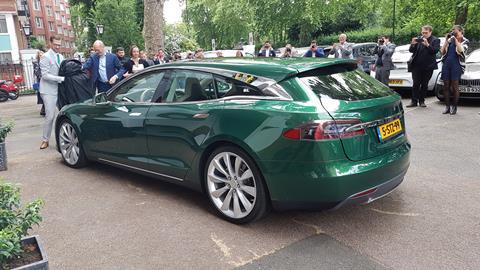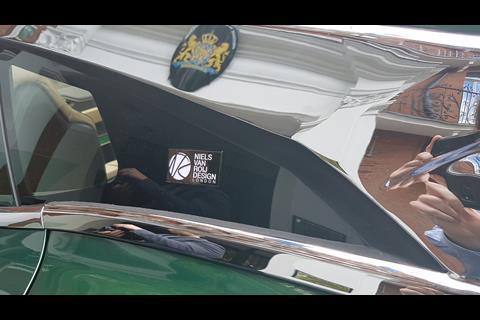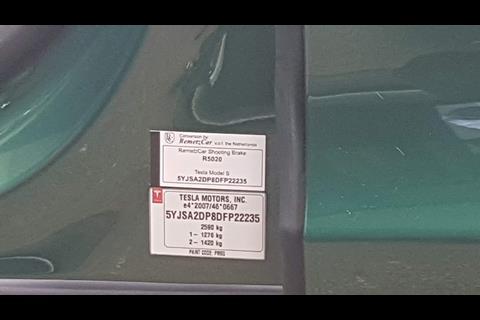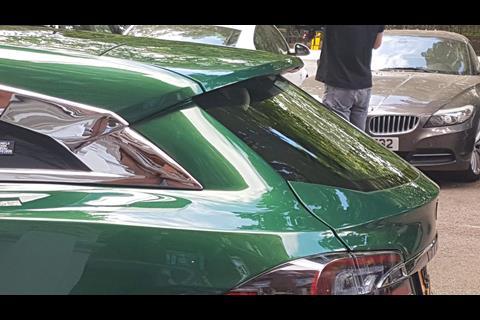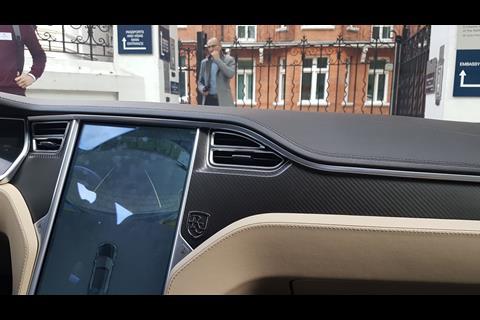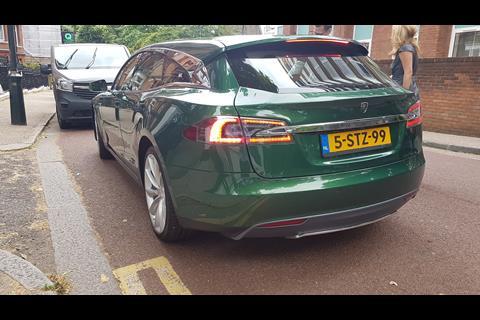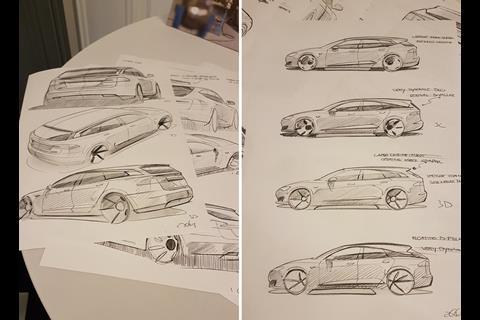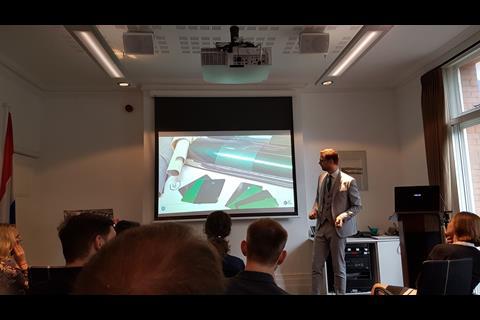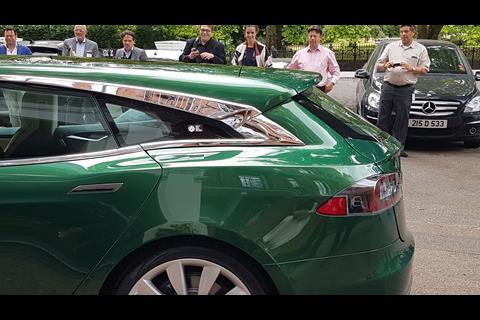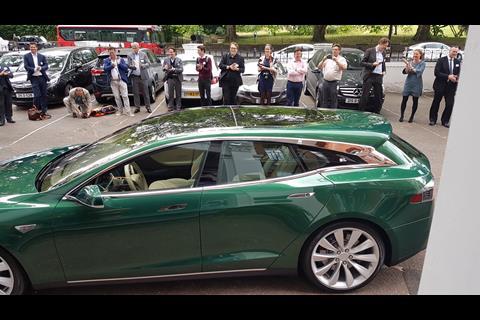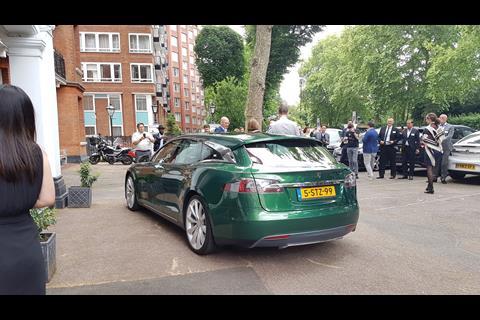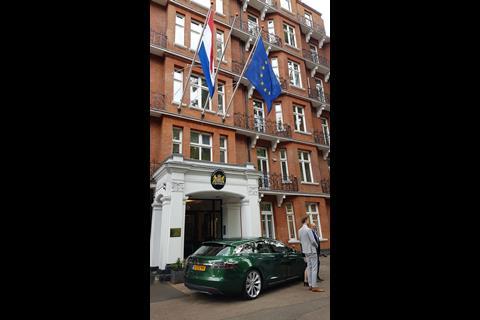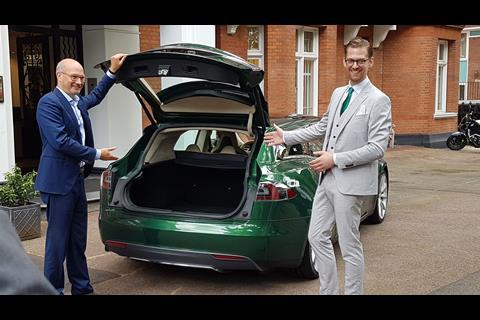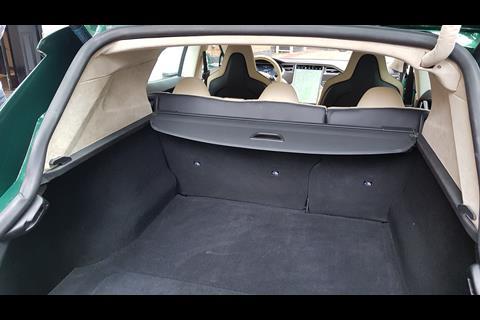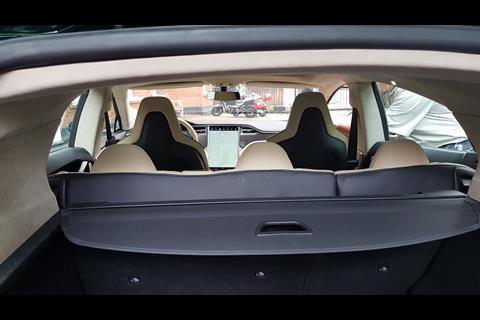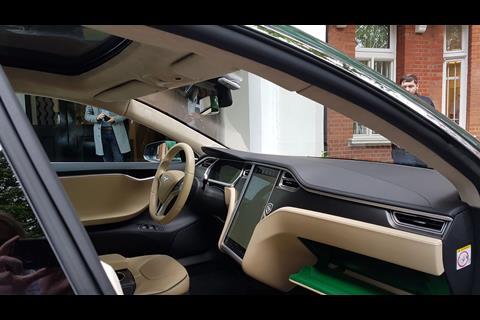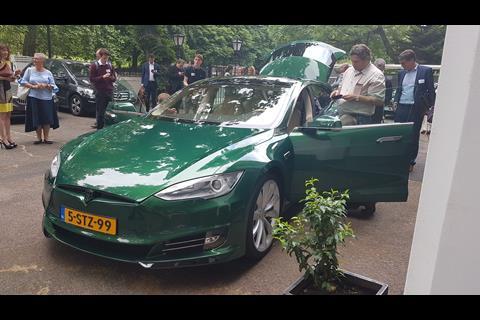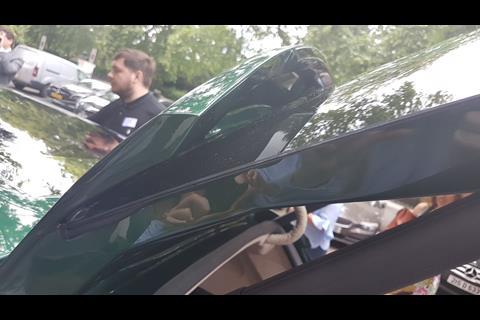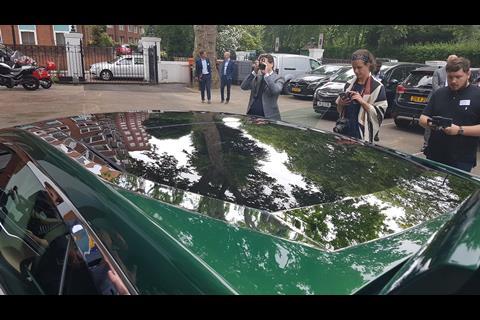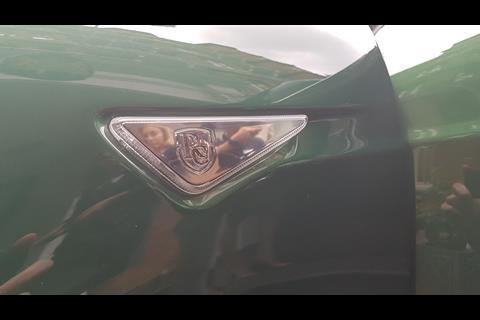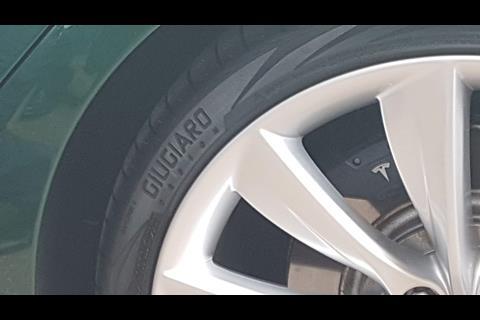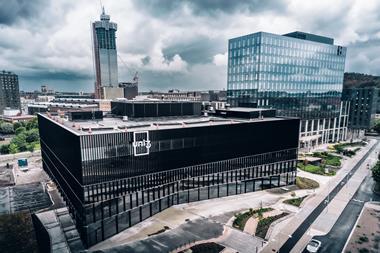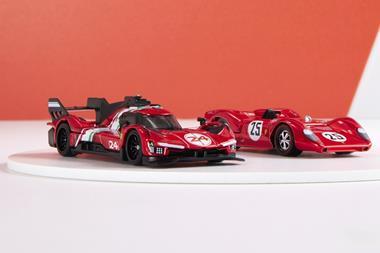It’s a Tesla, but not as we know it…
Niels van Roij, creative leader of his eponymous design consultancy, lamented that most of the projects his firm take on are shrouded in NDA secrecy, making it hard to show the world what they can do. Sat at the entrance to the Dutch Embassy overlooking Hyde Park, however, was his latest creation – something that’s definitely fine to discuss.
The opportunity for this project came from Floris de Raadt, shooting brake enthusiast and owner of neo-Isetta EV builders Elipo. He had seen the hearse conversion that Dutch coachbuilders Remetzcar had done with the Tesla Model S, and decided that a somewhat less morbid long-roof EV would be right up his alley.
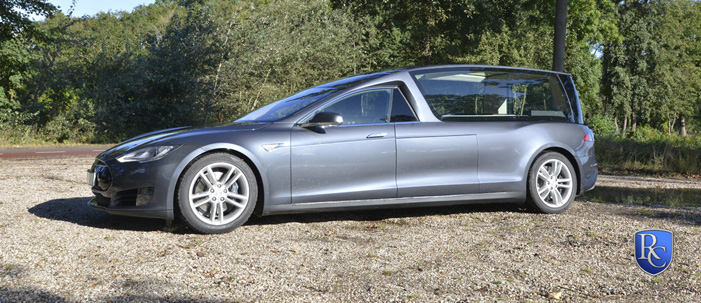
Not your usual source of inspiration…
He thus commissioned a ‘shooting brake’ conversion based on his 2013 Model S P85, which we can attest is much livelier than a hearse.
Keeping things Dutch, he tapped Van Roij for the design work (while also commercially collaborating with Vredestein tyres). The final design is the result of over 600 hours’ sketching – some of which was devoted to the important decision of whether to start the conversion at the B-pillars or the C-pillars.
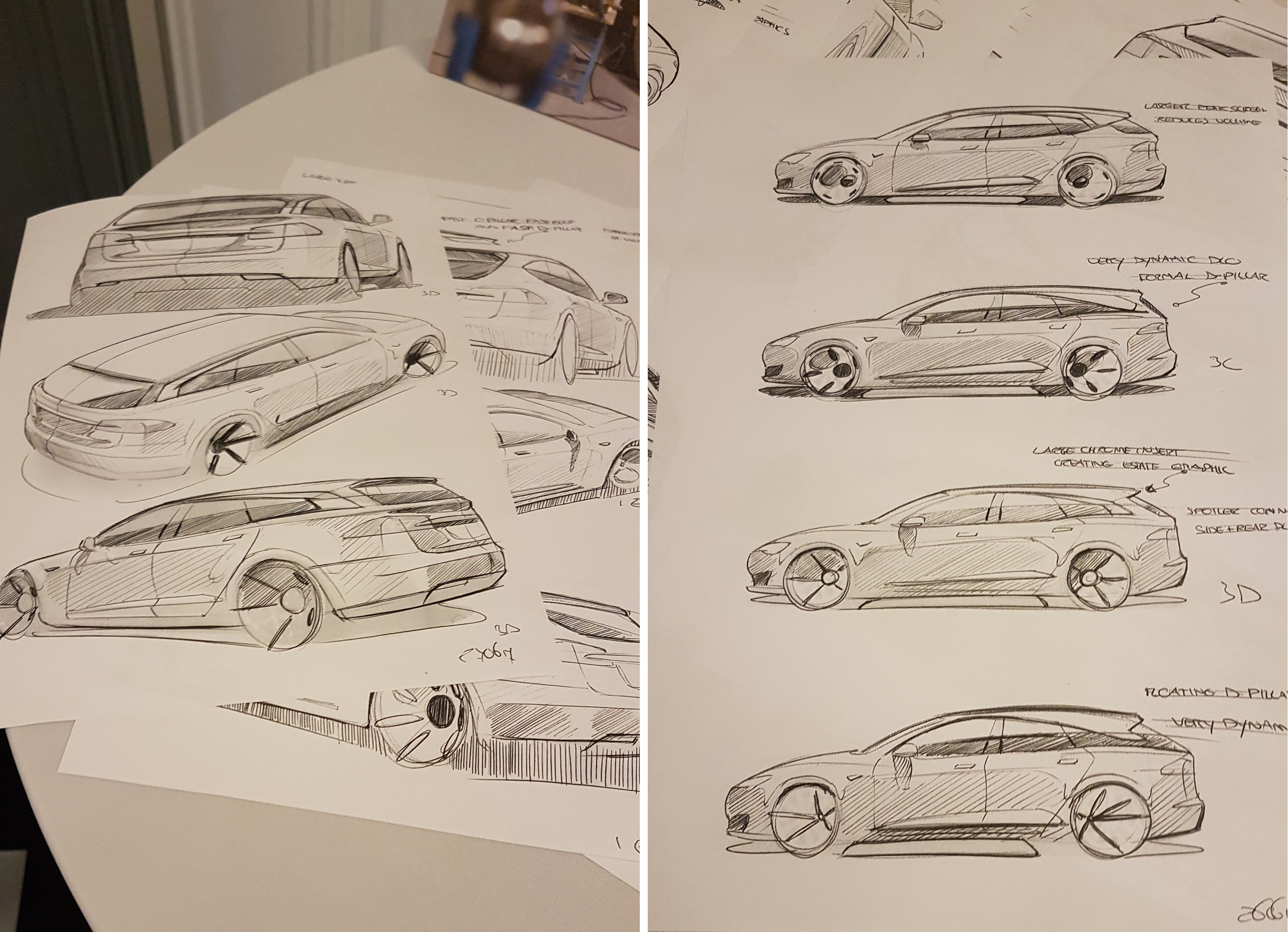
More than just a straightened roof and an upright rear windscreen, the ‘Remetzcar Model SB’ is in fact stiffer than the standard Model S, with around 10cm extra rear headroom and, obviously, a taller boot. The mechanicals (or rather, electricals) underneath are completely unchanged – as is the overall length of the car, making it only “a few kilogrammes” heavier.
Exterior
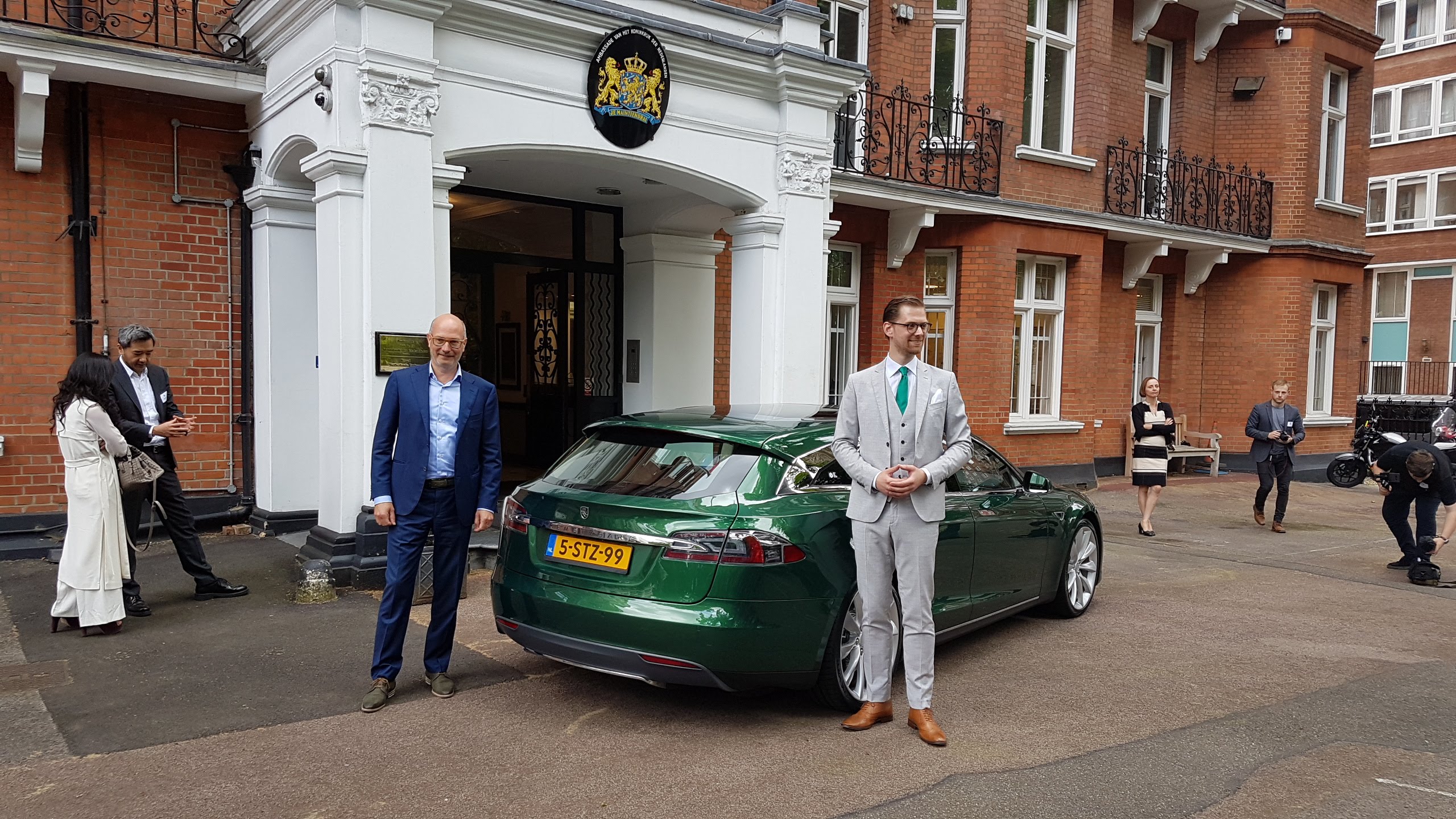
We should start at the back of a shooting brake conversion – or strictly, if we can argue semantics here, an estate conversion, since it still has five doors. The design team decided to change the roof from the B-pillars back, for the smoothest transition from original to new metal (aluminium, specifically). The ‘SB’ retains the OEM rear doors, but immediately behind those, the new aluminium starts in the lower volume.
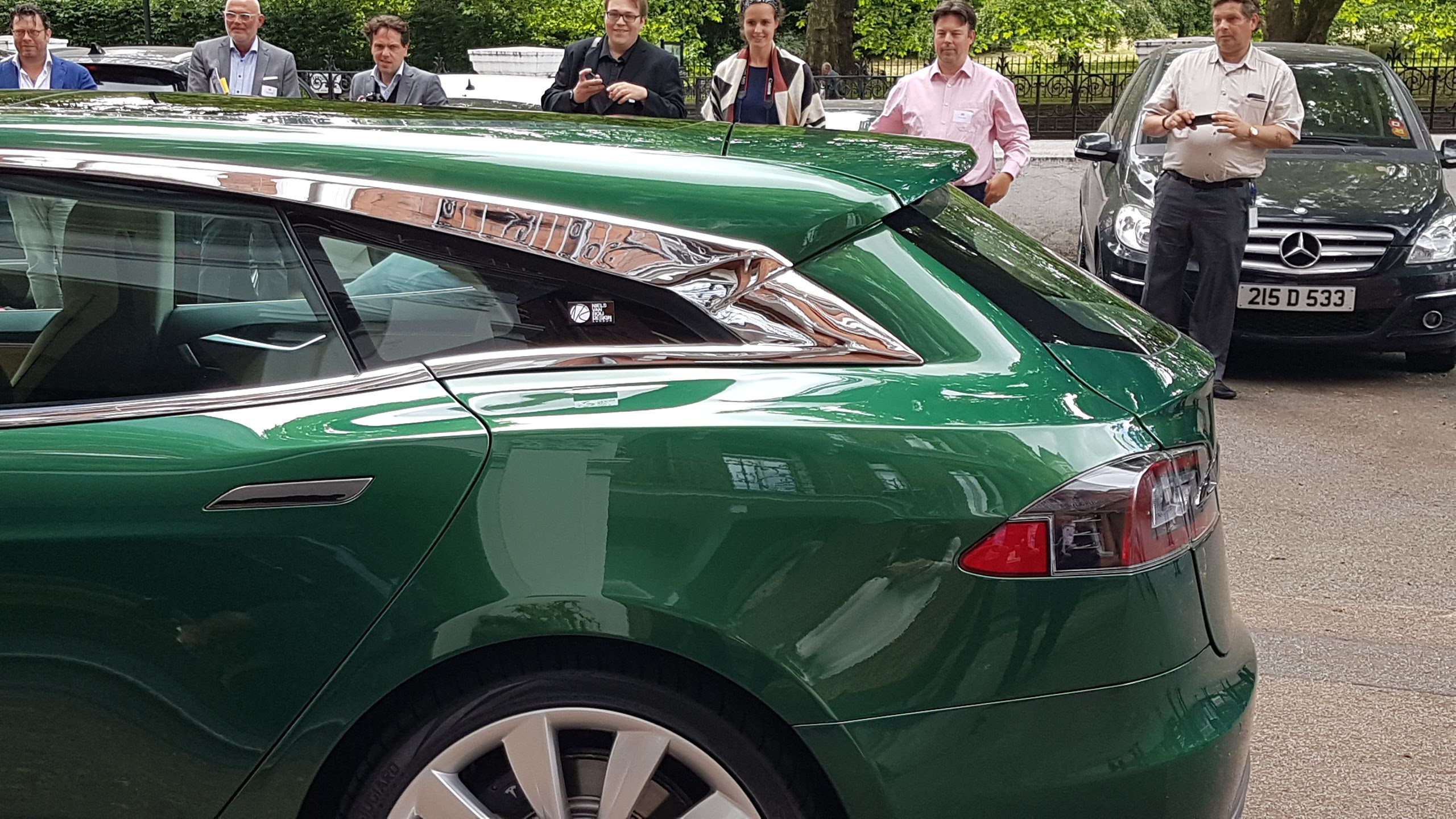
The changes at the waistline are subtle, only there to blend the new roof in. The bone line defining the rear haunch follows a shallower curve, flying clean over the top of the standard tail lights instead of blending quietly into them as before, meeting below the rear windscreen at the point where the tailgate spoiler would be on the standard car (and then subtly pulled slightly further out from the main body to meet the rear screen’s rake).
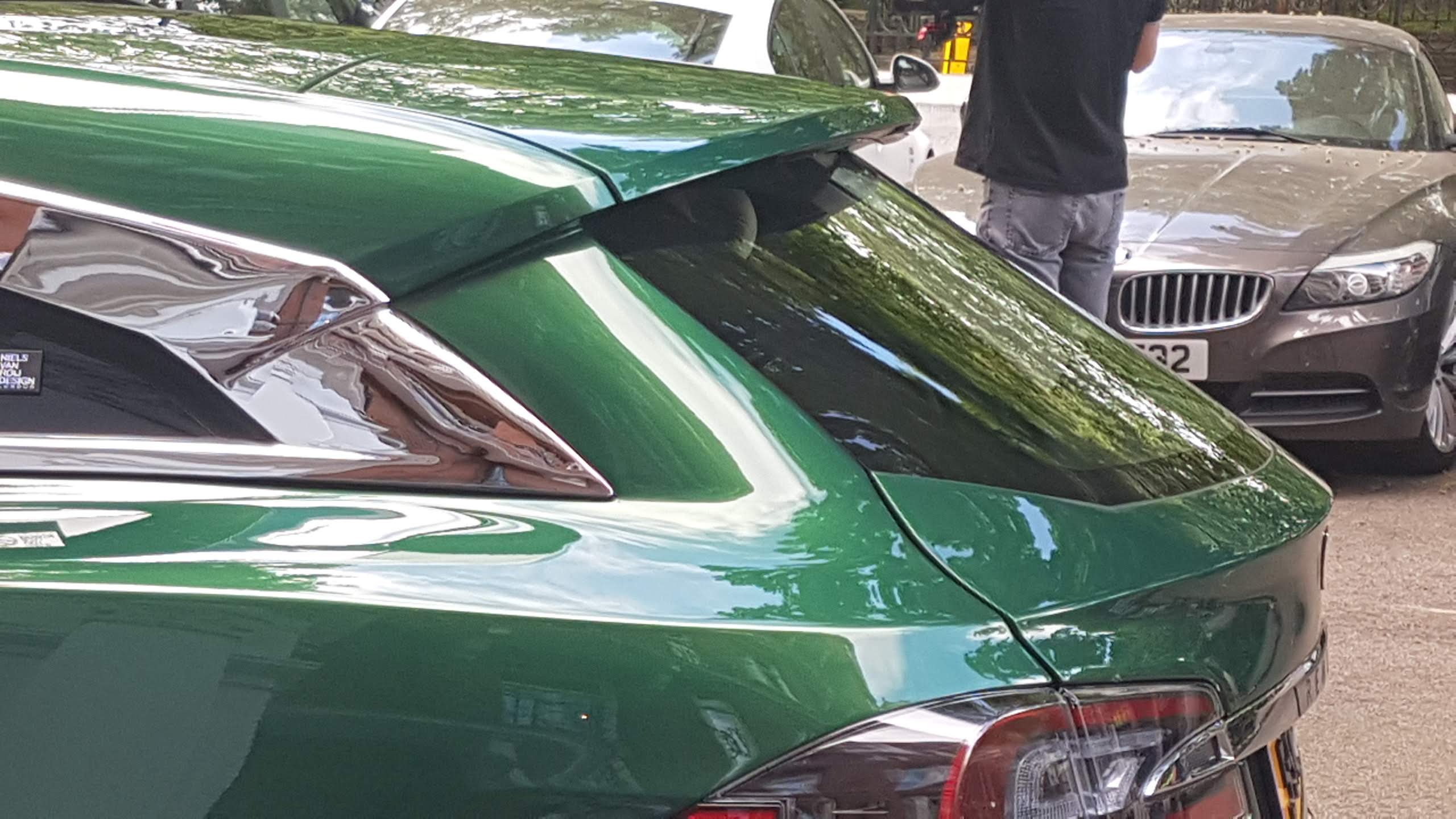
Above this area is the completely revised termination of the DLO – the element that caught our eyes first. The straightened roofline and the sloping rear doors’ window-line are tied together with what Van Roij claims is the biggest, most sculpted piece of chrome in the industry, which gets gradually thicker as it reaches back from the doors to the D-pillar. Slashing through said pillar is a deep undercut resembling a heavy pen flick off the new rear spoiler.
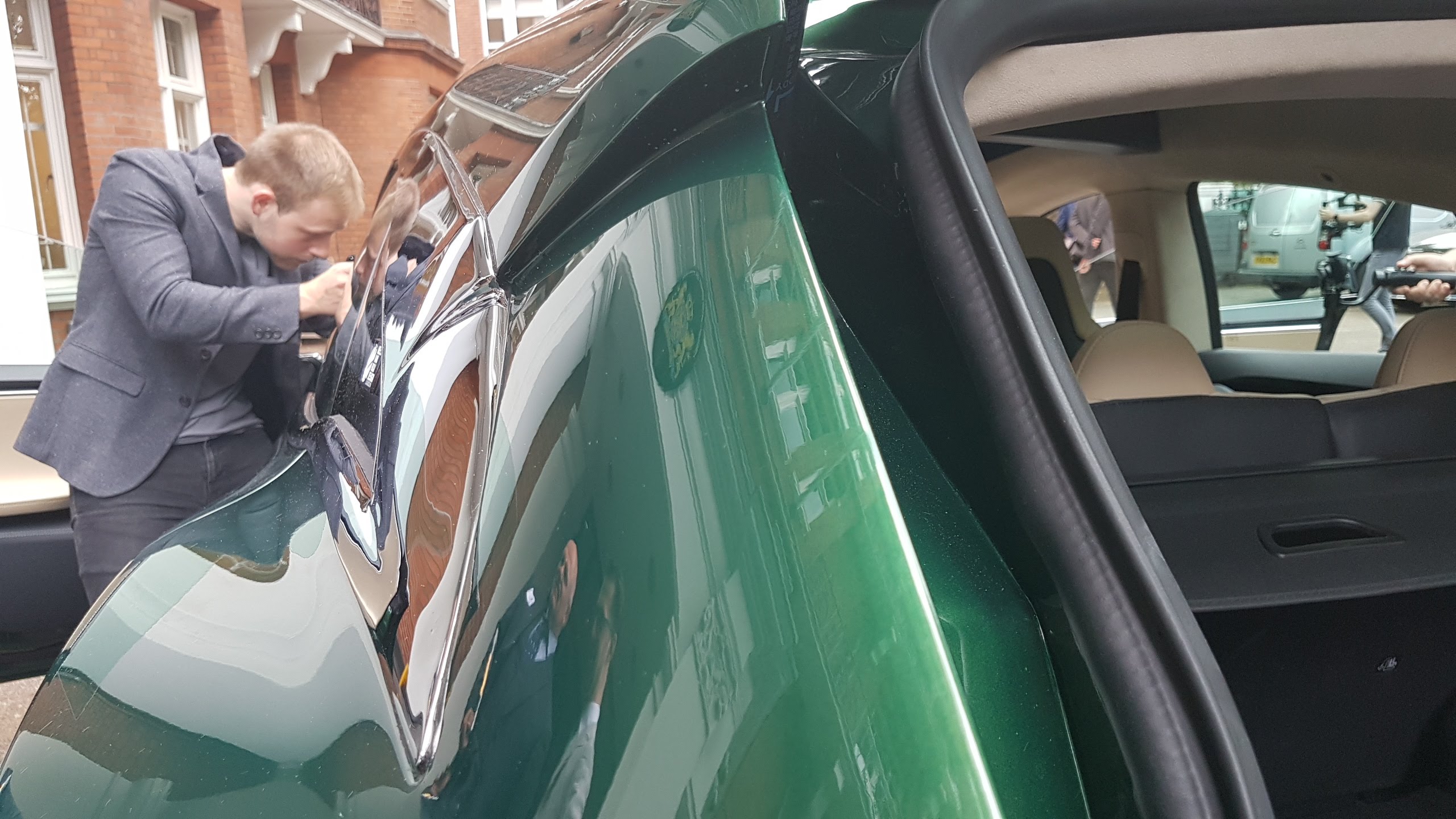
So clearly bisected is the surface that the inset area below the spoiler edge looks to us like it ought to be blacked-out, either partially like a Jaguar XF Sportbrake, or all the way through the vertical part of the chrome as well. However, Van Roij made clear that the lack of two-tone graphic trickery is very deliberate, as it shows off Remetzcar’s coachwork much more clearly (the whole thing is a single uninterrupted piece of aluminium, hand-formed in a way that machines can’t manage).
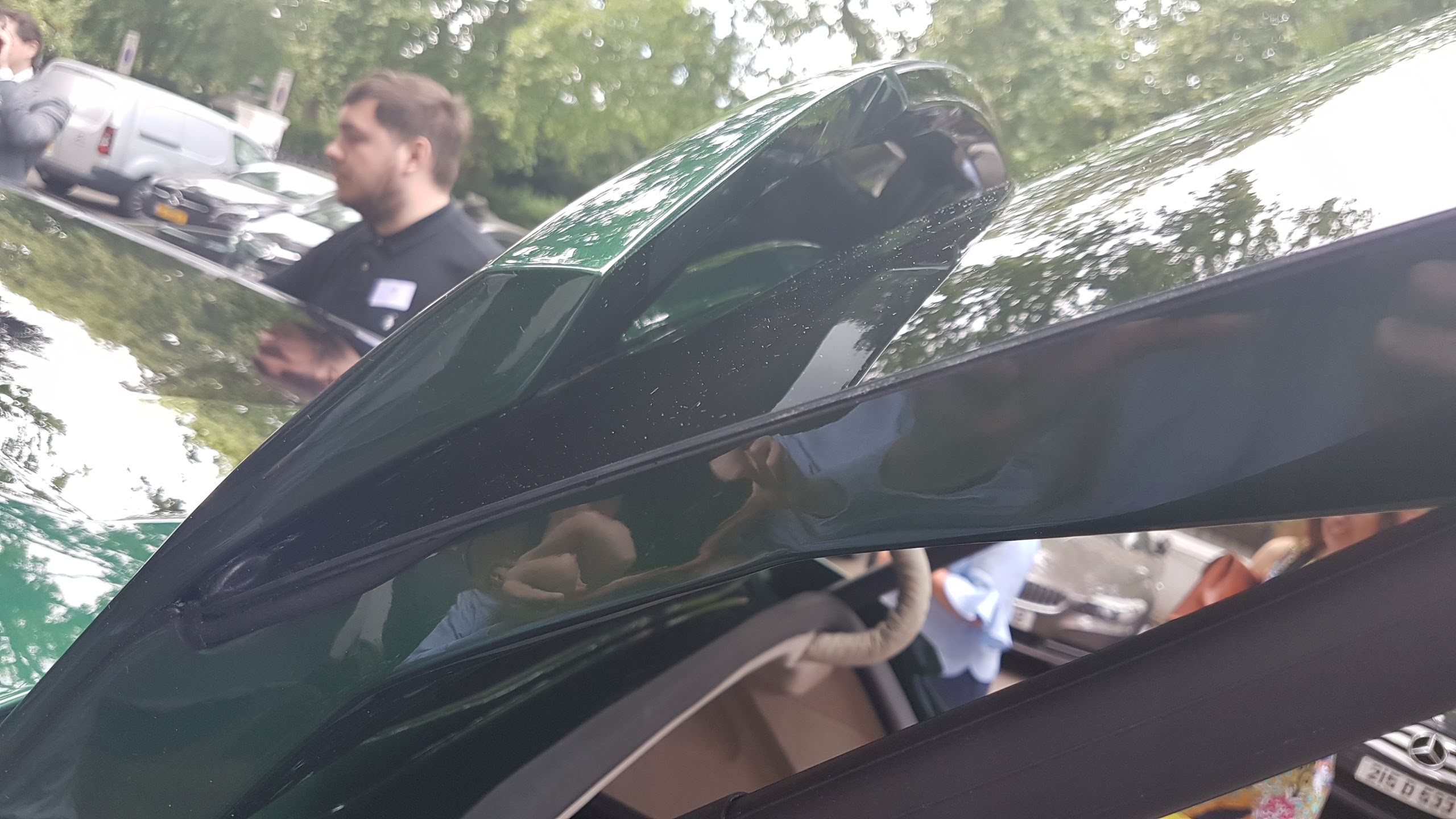
De Raadt requested that his new car should gain a rear window wiper, but since the design team considered this to be “putting a windscreen wiper on Naomi Campbell,” it’s tucked away out of view under that spoiler – a spoiler which sticks out so far that, ironically, the wiper becomes completely unnecessary at speed.

The top surface of the roof has been given equal attention, as the rear half of the panoramic glass roof has been given a shape that mirrors the side glass – because “why should it just be a square piece of glass?”
Its chrome frame (which, like the side pieces, can be optioned in carbonfibre) stretches forwards to the inner base of the A-pillars, a feature that is entirely absent from a regular Model S and helps subtly differentiate it from the front view.
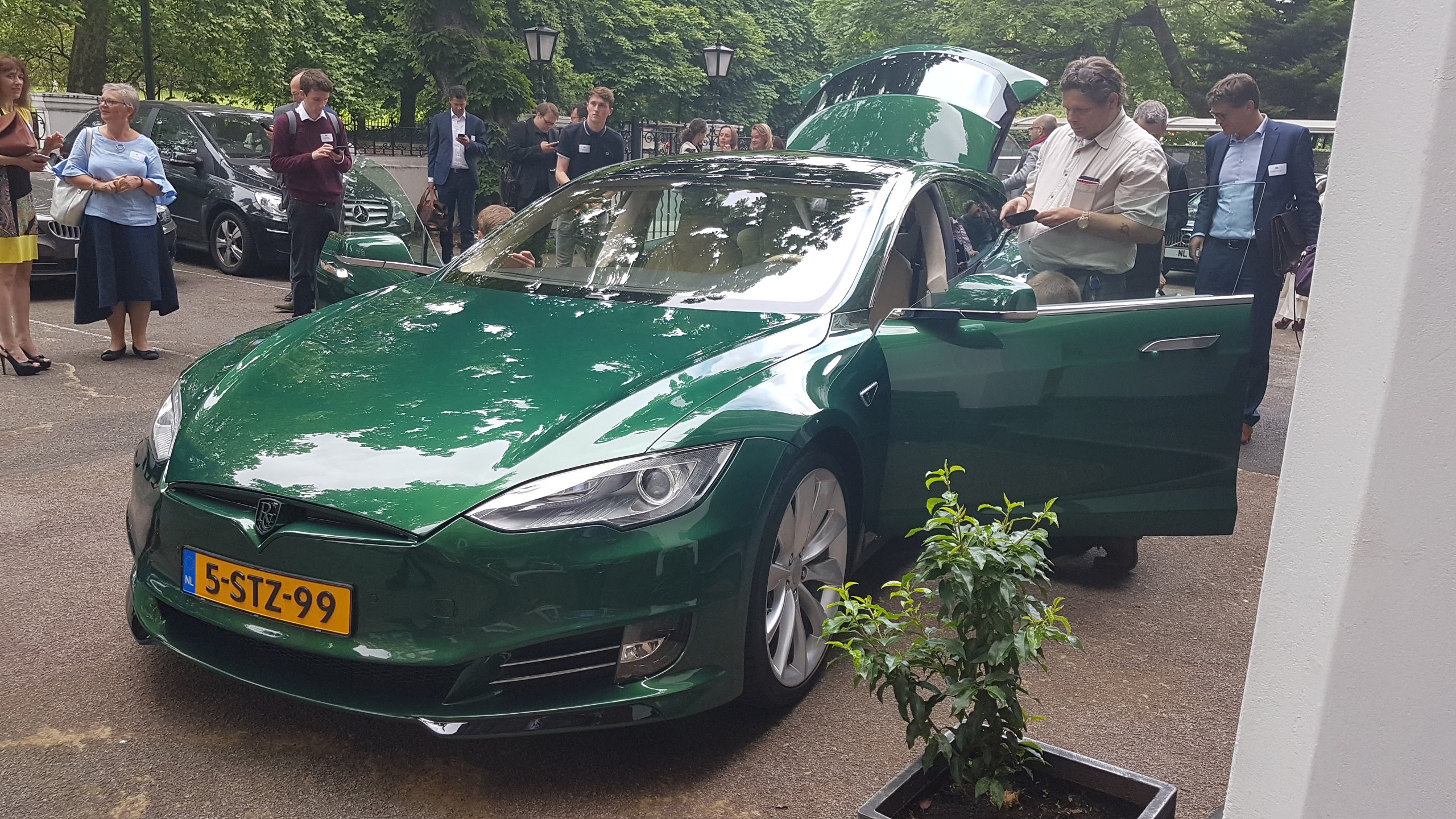
Speaking of the front view, the front bumper has been replaced with an aftermarket facelift lookalike piece – an OEM facelift bumper doesn’t actually fit the pre-facelift cars, for some reason.
Finally, the colour is a variation of British Racing Green (as Britain is considered the shooting brake’s spiritual home), which took additional inspiration both from the leaves in De Raadt’s garden and the green in Elipo’s logo.
Interior
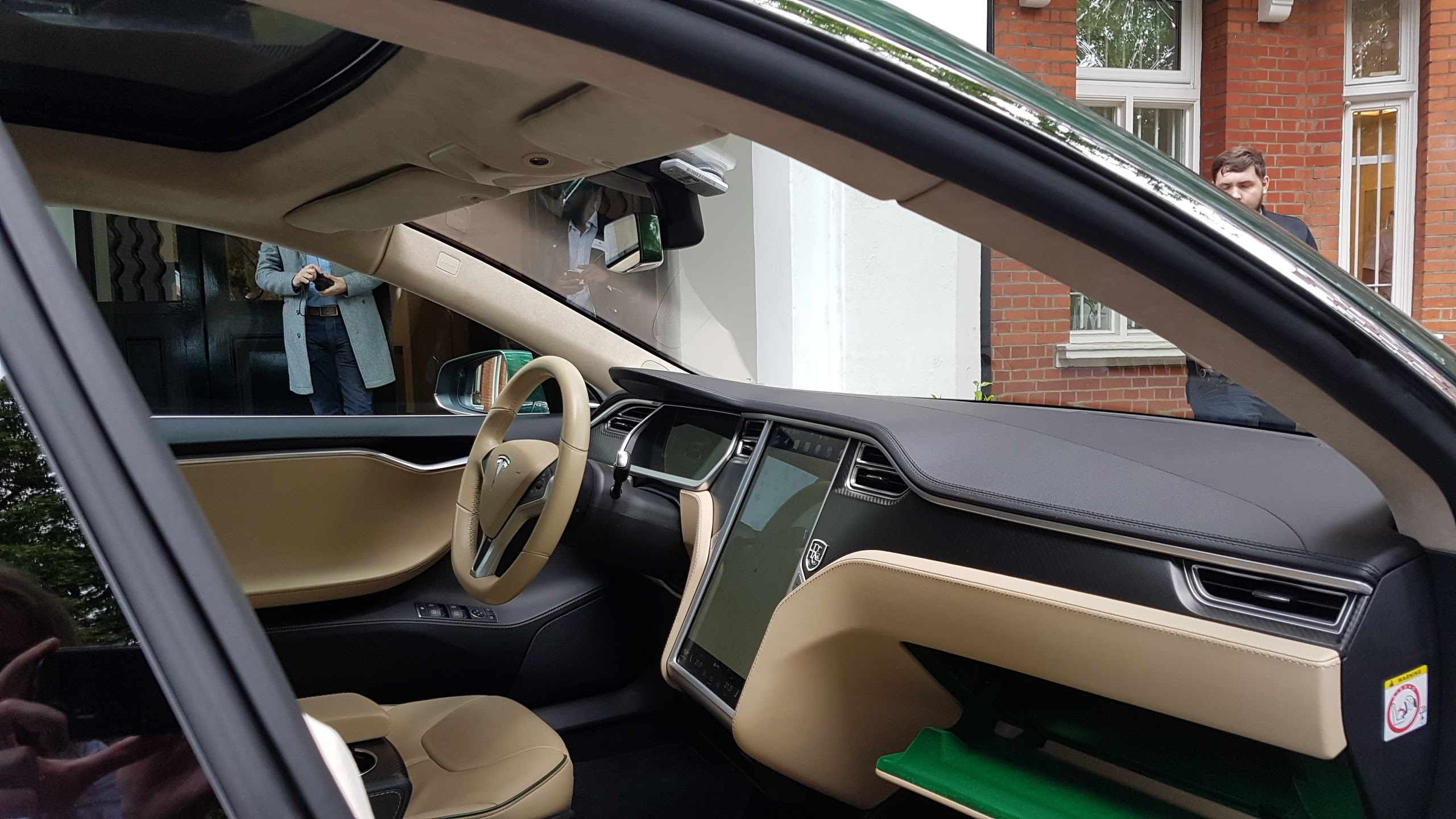
The interior was essentially an exercise in reupholstering. The soft beige leather on the seats is subtly divided up by colour-matched suede on strategic panels. The same leather is found on the steering wheel and the lower dash and door panels. They are complimented by body-coloured green piping, while carbonfibre sits between the upper and lower leather dash elements.
The exterior colour also makes a cameo on the glovebox liner and the interior mirror casing.
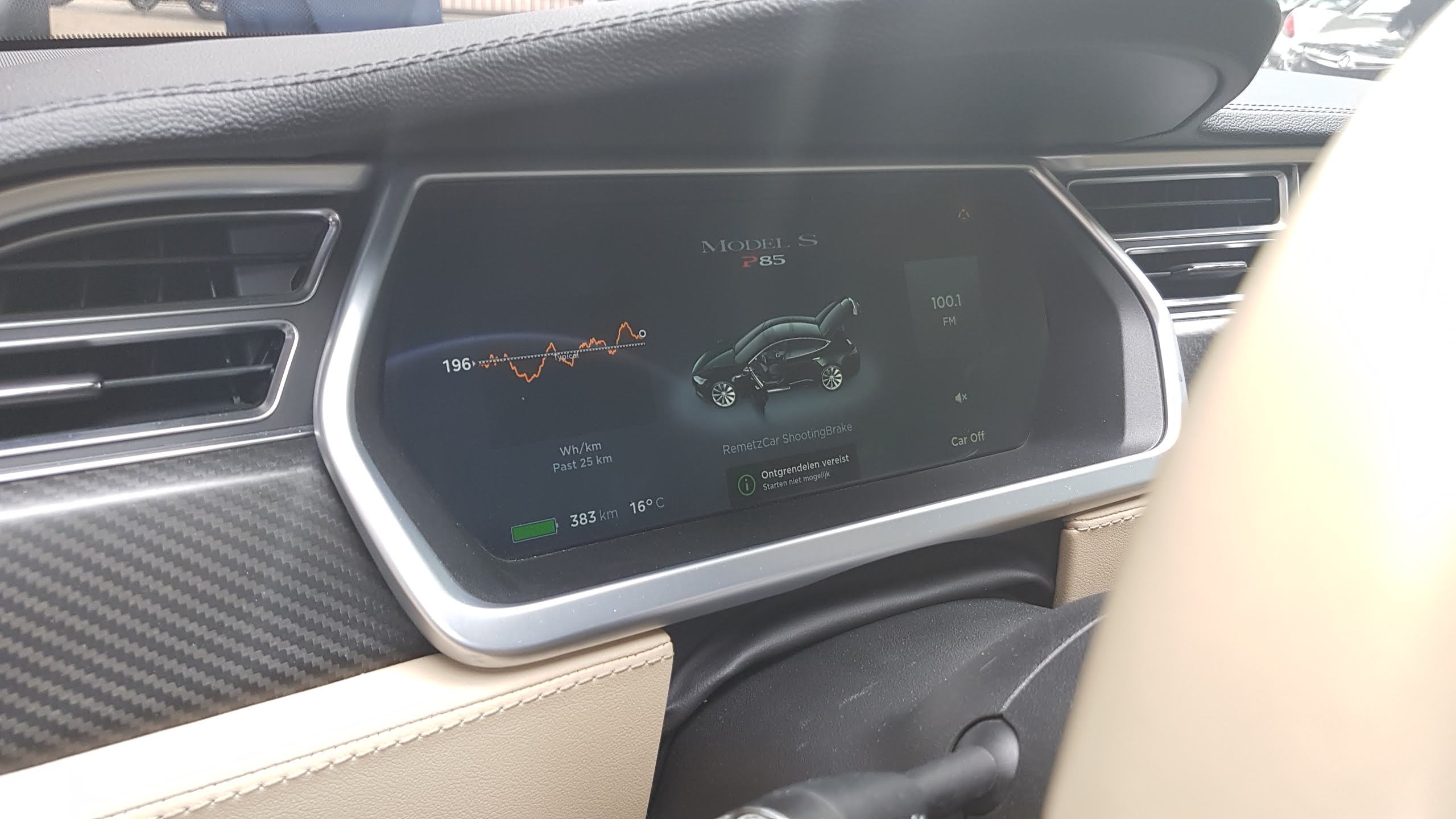
One final bit of personalisation is still in progress at the time of writing: the virtual icon of the car inside the IP screen still shows a standard Model S, albeit with its new name displayed underneath, but apparently it will soon be updated appropriately.
–
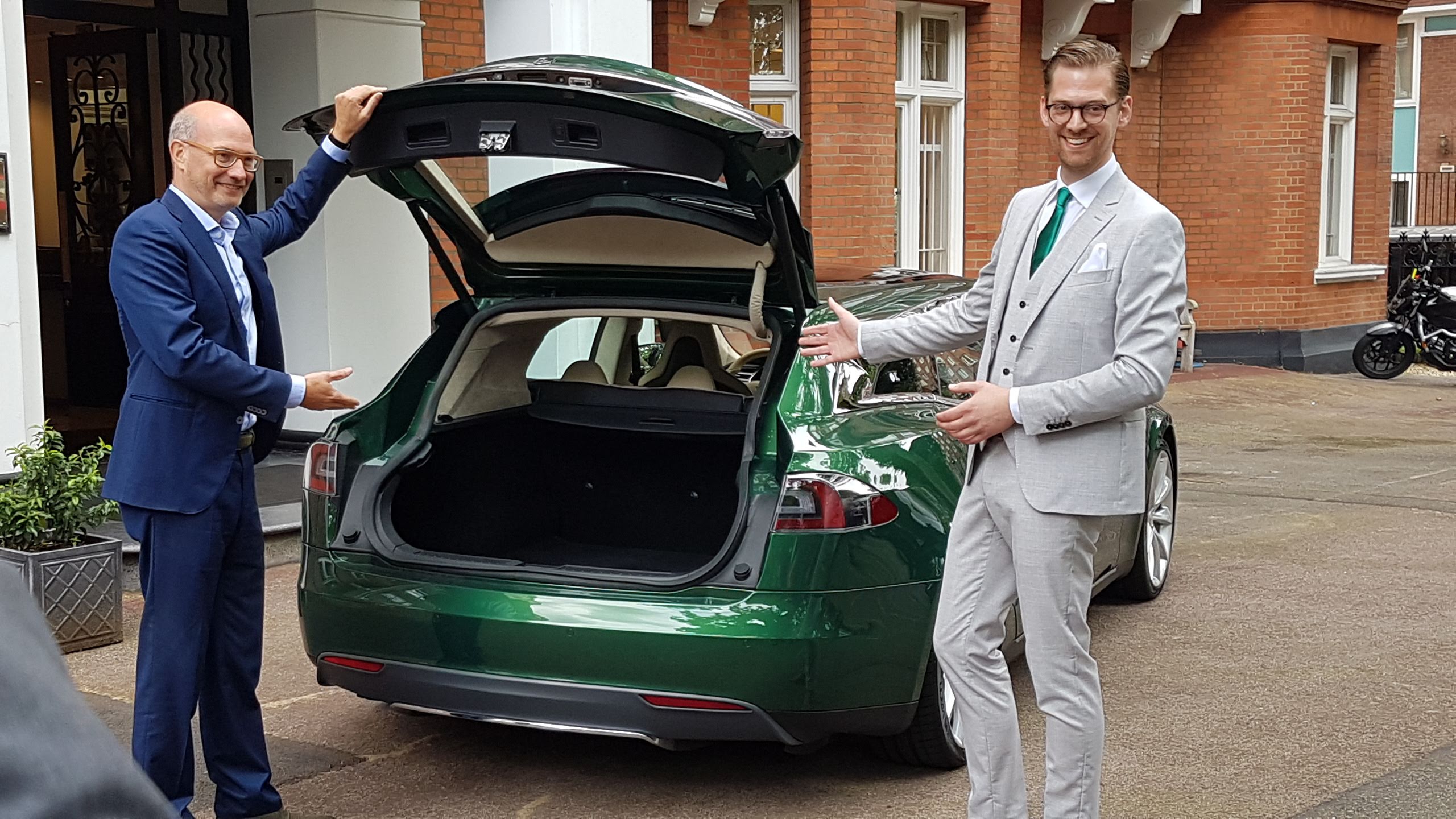
The target is to convert around 20 customer donor cars before calling the project finished. Having figured out how to build the car you see here, they reckon it’ll take about five months to fully convert each of the other 19 or so. As well as requiring your own Model S, the conversion itself is estimated to cost over £80,000 plus taxes, with the exact figure depending on your exact taste.
Van Roij qualifies that most ‘shooting brake’ conversions typically match the list price of the original car, making this SB on par in this regard.

Of course, whether you enjoy all the changes and design decisions or not, the simple fact is this: as we were driven swiftly around the block by Mr. de Raadt, we saw four or five Model S Teslas parked on the street or driving past… but none of them were quite like this one.































